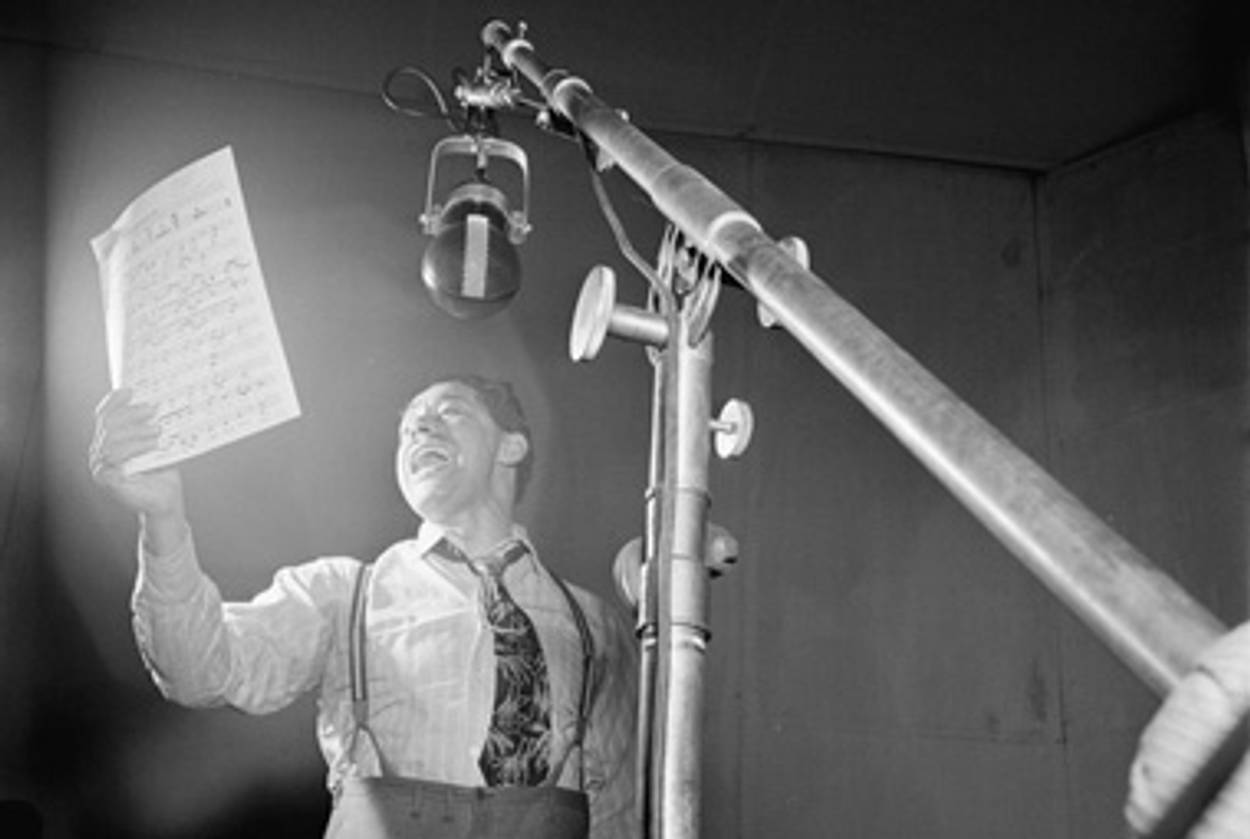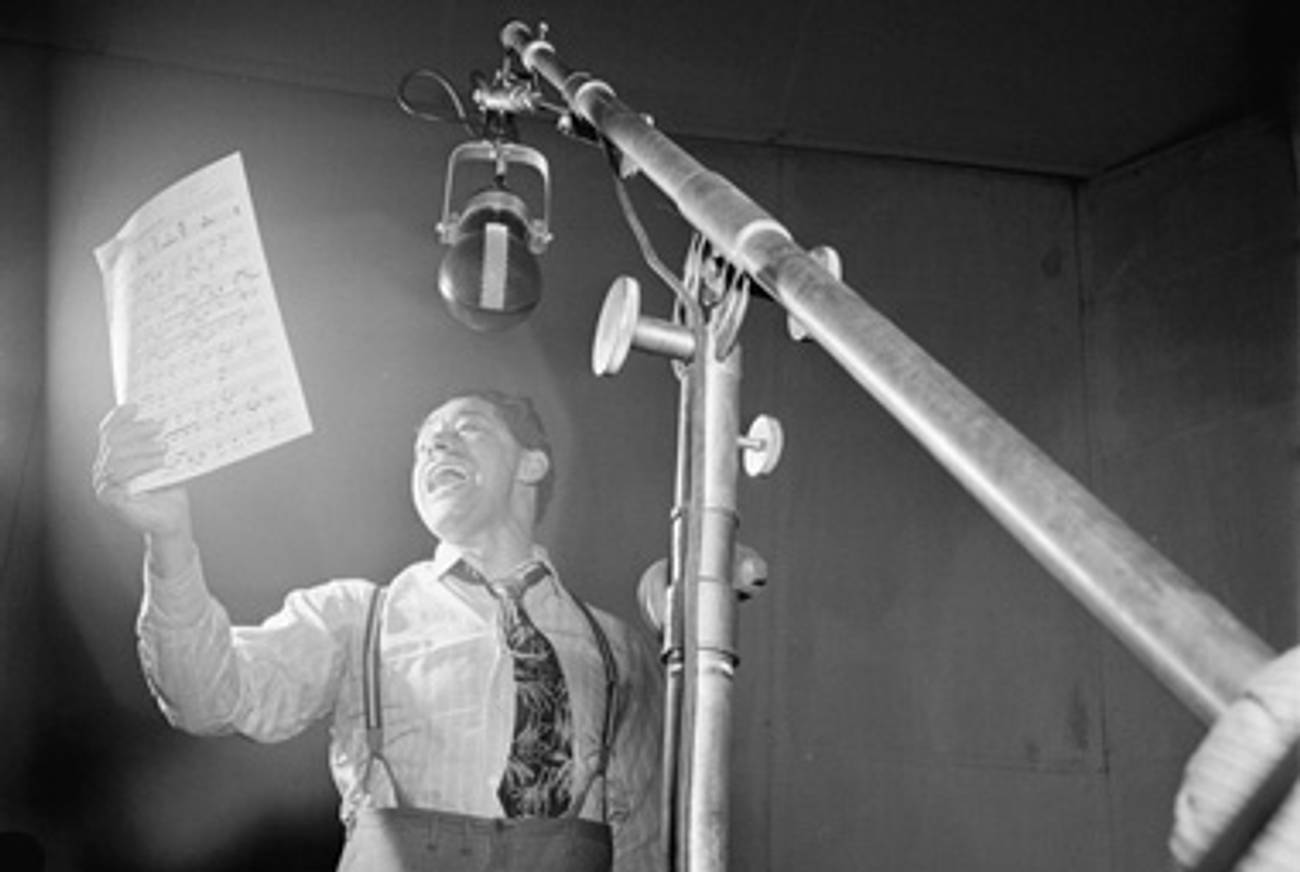Fusion Confusion
A new CD claims to shine a light on a secret chapter in black-Jewish music history, but the secret is long out




There are only two things wrong with Black Sabbath, the latest compilation CD from the estimable Idelsohn Society for Musical Preservation: its subtitle—“The Secret Musical History of Black-Jewish Relations”—and the premise behind it.
That premise, which is spelled out in the otherwise excellent liner notes—as artful a combination of marketing savvy and musical scholarship as I’ve encountered—is that while much has been made of Jewish interest in black music, the converse has remained a little-known trade secret.
There is, in turn, just one thing wrong with this premise: It simply isn’t true.
Yes, much has been made of the many Jews who have played a role in black music and culture. For recent examples, look no further than the films Cadillac Records and Who Do You Love; and David Lehman’s A Fine Romance: Jewish Songwriters, American Songs, one of several books the Society recommends for further reading.
But should the performance of Jewish-themed material by black musicians really come as such a surprise to anyone who has been paying attention for the past 100 years?
“To me,” says Lehman, who teaches in the graduate writing program at the New School, “this is not news.” (When we spoke by phone, Lehman had not yet seen the disc.)
That Black Sabbath was inspired by the random discovery of an old vinyl recording of Johnny Mathis singing “Kol Nidre” suggests that the collectors behind the Society may suffer from Christopher Columbus syndrome: Having tripped over a continent, they assumed that they were the first to have discovered it. By that logic, every 13-year-old boy on earth could claim to have “discovered” the miracle of onanism.
The evidence for black investment in music that bears some relation to Jews and Judaism is all around us and has been for some time–even longer, I would guess, than all of those early 20th-century recordings of black baritones belting out Negro spirituals. And is it any wonder? Five thousand years of exile, oppression, and slavery virtually guaranteed that Jews would serve as allegorical stand-ins for African-Americans. After all, it wasn’t so long ago that “Go Down Moses” made a conveniently coded song of protest.
If this long-standing musical relationship seems at all surprising from a contemporary vantage point, that’s “only because we’ve been conditioned to imagine that Jews and blacks are in conflict with one another politically and culturally,” says Lehman—conditioning that has much to do with the rift that opened between the two groups toward the end of the civil rights era, a black-Jewish love-in the likes of which we’ll probably never see again.
One can’t deny the distance that now separates black Americans from American Jews, or the emphasis that contemporary observers tend to place on the appropriation (read: theft) of black culture by Jews and other white folk. But it seems silly to suggest, as if by extension, that any part of their long, two-way history of cultural exchange remains undiscovered country.
It’s also silly to read too much into the musical tea leaves. Is it really significant that Jimmy Scott covered the theme to Exodus in 1969–the same year that the Temptations unleashed their groovy “Fiddler on the Roof Medley”—when both Exodus and Fiddler were such huge hits that few didn’t try them on for size? Or that Mathis gave forth with “Kol Nidre” in 1958, when he already had available for study Perry Como’s 1953 version? Perry Como, ladies and gentlemen.
Josh Kun, who wrote those otherwise excellent liner notes, attributes much of this to the sense of solidarity that many blacks felt with Jews after the birth of Israel, when they saw reflected in the successful push for a Jewish homeland their own yearning for freedom. And he may have a point, at least when it comes to a tune like Lena Horne’s “Now!,” a sock-it-to-’em protest song from 1963 set to the tune of “Hava Nagila.”
But much of the music included in the compilation was simply in the air at the time–a time that was both closer to the golden era of Jewish jive exemplified by Slim Gaillard’s “Dunkin’ Bagel,” from 1945, and Cab Calloway’s “Utt Da Zay,” from 1939; and to the golden era of Jewish folk song, which owed as much to the larger folk revival of the 1950s as it did to Israeli independence. Popular entertainers draw their material from popular culture, and these Jewish-themed tunes qualified as such at the time.
This might all sound like pointy-headed quibbling, especially given how entertaining the music on Black Sabbath is (the album has justly made it onto the Billboard chart) and how poor our collective memory tends to be. Lehman contends that any reminder of the long history of positive collaboration between blacks and Jews is both welcome and salutary, and I won’t argue with him. Nor will I deny that Billie Holiday’s home recording of “My Yiddishe Momme,” from 1956—a genuine find that’s almost painful to hear, given how battle-scarred Holiday’s voice was then—“makes the point in a way that’s impossible to miss.”
But this isn’t just any old compilation CD. It’s a compilation CD with a message and a mission. And both seem needlessly muddled.
In contrast, there was nothing at all muddled about the presentation that the Bronx-born, Budapest-based fiddler and food blogger Bob Cohen recently gave on his 30 years of research into Jewish and Gypsy music in Romania.
Speaking at the Center for Jewish History as part of the New York World Festival: Music Around the Black Sea, Cohen traced the complex musical connections between the Roma and the Jews–connections that really do qualify as “secret,” if only because many of the people who once played traditional Central European Jewish and Gypsy music are now dead and the audience for such sounds has largely disappeared.
Any effort to unearth those connections, and the history of positive cultural collaboration between the Roma and the Jews–especially at a time when many European countries seem intent on subjecting the Roma to the same treatment that African-Americans received only two or three generations ago–seems both welcome and salutary, as well.
Alexander Gelfand is a recovering ethnomusicologist, a sometime jazz pianist, and a former West African drummer. His work has appeared in the New York Times, the Chicago Tribune, the Forward, and elsewhere.
Alexander Gelfand is a recovering ethnomusicologist, a sometime jazz pianist, and a former West African drummer. His work has appeared in the New York Times, the Chicago Tribune, the Forward, and elsewhere.